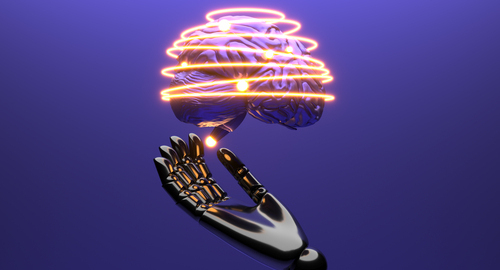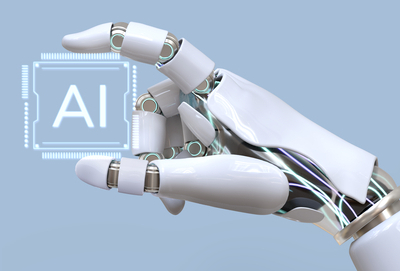Process Mining and Task Mining fuels Automation across the Enterprise
3AI March 28, 2023

Featured Article:
Author: Prakash Narayanan, Head of RPA & Intelligent Automation, Cyient
Every business is a collection of core processes. Processes are the foundational infrastructure and form the basic element of business operations. In 1911, Frederick Winslow Taylor became the first person to study and optimize workplace productivity. His monograph ‘The Principles of Scientific Management’ pioneered the idea that a business’s core operations should be analyzed, standardized and improved on.
Now we have powerful AI based technologies like Process mining and Task mining to analyze, standardize and improve the complex business processes. It’s impossible to optimize a core enterprise process for a specific business outcome without a holistic understanding of how the whole landscape of business processes are connected. Process mapping software and manual process discovery methods cannot cater to this requirement.
Based on the recent trends shaping Digital Transformation, Business leaders agree they must significantly accelerate the implementation of digital technologies such as Robotic process automation (RPA) & Intelligent automation powered by Computer Vision (CV), Natural Language processing (NLP), Machine Learning (AI-ML) and Low code No code (LCNC) platforms to effectively support the business. When implementing RPA, CXOs see investment in Process mining and Task mining as key to unlocking returns from the technology.
Despite the ongoing investment in RPA, CXO’s are realizing the need for Hyper automation to realize their full automation objectives. To realize higher value from their RPA investments, they are turning to a suite of Data mining technologies, such as Process mining and Task mining which will remain a future driver of growth for automation using RPA and IPA in the coming years.
Process mining allows business units to gain complete transparency into business processes, to transform them with automation and improvements that drive continuous operational efficiency. Digital footprints left behind in ERP, CRM, PLM systems have a story to tell about how work really gets done, which process transformation actions are most impactful, and where your best automation opportunities lie. It provides heightened insights to optimize, automate, and monitor end-to-end processes continuously.
Stages involved in process mining
As people interact with business IT systems, their actions are captured using the digital footprints left by human users. This data can then be transformed into pre-formatted event logs and visualized with the help of a process mining tool.
- Collection – Involves collection of time-stamped event log data from key transactional systems like SAP, Salesforce, Oracle, PLM etc. The activity or interaction of humans with the system takes place, creating a digital record. Some examples of such activities are receiving a Quote, creating a Purchase order, submitting documentation for Loan approval, approving a loan, entering information into a health EMR system etc.
- Discovery – This stage involves discovery within the log files data of real processes as they actually happened. Process mining software transforms the digital records (log files data) into event logs. The most common format for these event logs is an XML-based format XES (extensible Event Stream) which was adopted by IEEETask Force on Process Mining. Event logs have at least three main attributes: case ID, activity, and timestamp.
- Enhancement – This stage involves enhancement of the processes in scope to optimize business outcomes. The enhancement can be a process re-design or re-engineering by eliminating duplicate, in effective process steps to eliminate rework, increase efficiencies and for automating the manual rules-based steps using RPA. The visualization of a process is automatically created using event logs. It’s important to understand that unlike traditional Business process management (BPM) techniques, process mining shows the real process based on evidence residing in the log files data. The Process mining tool can mine historical data depending upon the requirement and scope agreed with the Process owner.
- Monitoring & Conformance checking – This stage involves monitoring of the process improvement changes that were made in stage 3 for further improvement opportunities. Here, KPIs can be created and monitored to uncover potential improvement areas; data mining and/or ML algorithms can be used to detect hidden patterns and dependencies; or conformance checking techniques can be applied to compare the process to a certain ideal model. Conformance checking compares the actual process with a predefined model to discover deviations. So, it’s used to check if the reality conforms to an existing pattern. Conformance checking is very useful to audit and compliance teams to identify non-compliance and deviations from standard operating procedures.
Applications of Process mining
Process mining is not limited to any specific sector or domain related processes. As long as there is a source system containing structured log file data, Process Mining can be used across the business operations spanning a multitude of sectors like Healthcare, Telecom, Aerospace, Energy & Utilities, Mining and functions like Finance, Human resources, Manufacturing – Supply chain, IT, Sales, Procurement and Audit. Typical systems used in Process mining are ERP systems like SAP, Oracle, CRM systems like Salesforce, PLM systems and Supply chain systems in-house developed or Commercial Off the shelf (COTS) products.
Task Mining
Task mining is a technique to uncover business processes by recording user interactions with various systems, including enterprise solutions (ERP, CRM, BPM, ECM, etc.), personal productivity applications (Microsoft Excel, Outlook, Word, PowerPoint etc.), and terminal and virtual environments. Unlike process mining that reconstruct processes using the data from event logs generated by enterprise systems, Task mining captures user interactions with any application. It records necessary data such as keyboard actions, mouse movements, clicks, etc. for identifying RPA opportunities and automatic creation of Process discovery documents (PDD) and RPA bots.
Thus, combining Process mining capabilities with Task mining provides a comprehensive picture of core enterprise processes. It removes process gaps and eliminates hidden inefficiencies and non-compliance risks. It allows Process owners to achieve full transparency with their processes bridging the gap between task analysis and end-to-end process view.
Title picture: freepik.com






